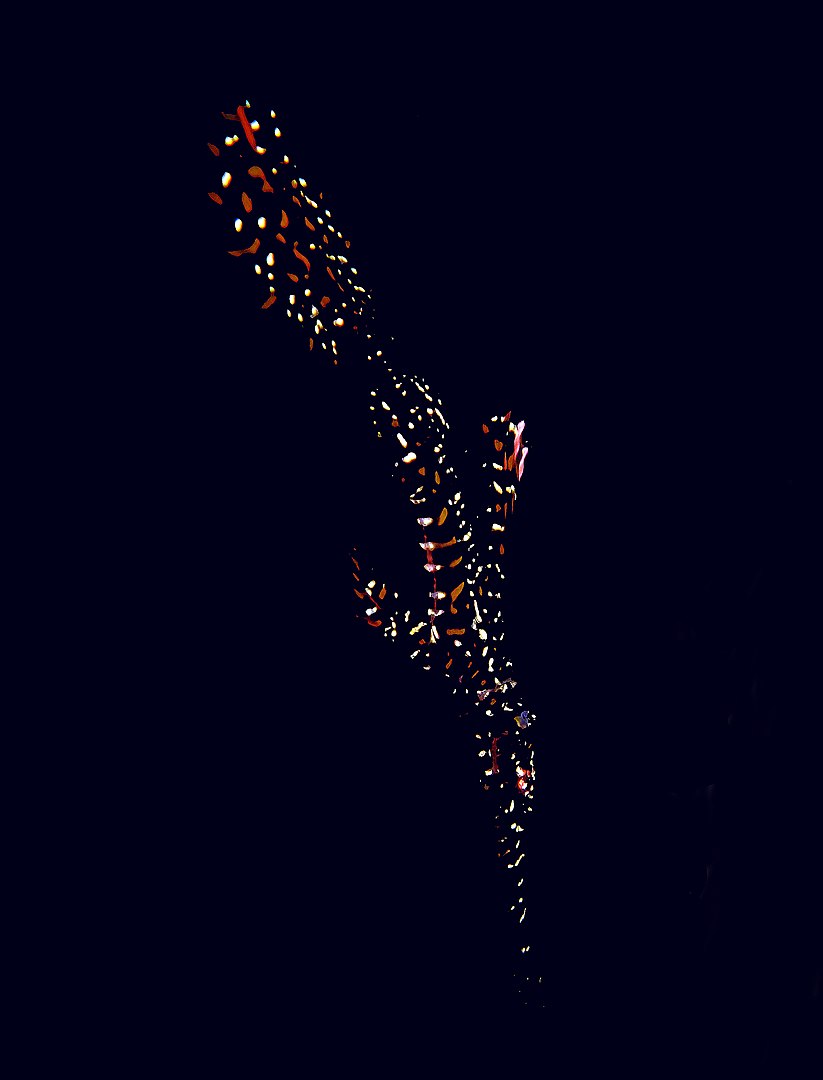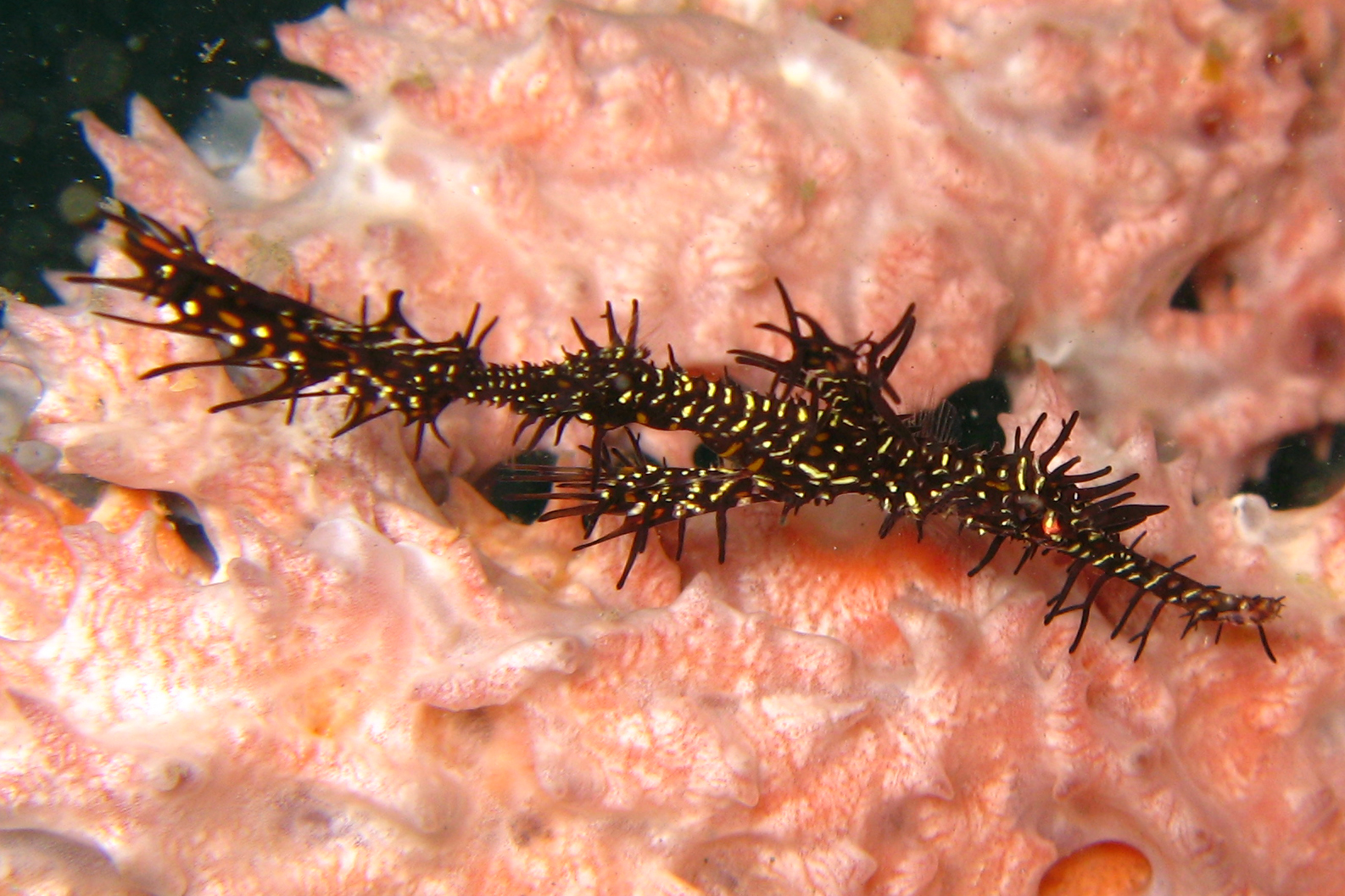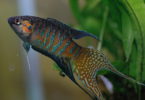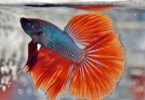Last Updated on February 10, 2023 by Matt
The Ornate Ghost Pipefish, Solenostomus paradoxus, is a highly unusual and fantastic looking fish. It is a species of false pipefish, and is related to the true pipefishes and seahorses.
It is also known as the Harlequin Ghost Pipefish, and is one of six species in the genus Solenostomus. This genus is the only one present in the family Solenostomidae, and is in the order Syngnathiformes along with true pipefish and seahorse.
In this brief overview of this unusual species we will give a description of the species, its distribution, and interesting reproductive behavior.
IN THIS ARTICLE
Description
The Ornate Ghost Pipefish have the elongated snout and laterally compressed body which are the typical features of all fish in the Syngnathiformes order. The head comprises one third of the total length of the fish.

Solenostomus paradoxus looking like a ghostly apparition, living up to its name! Photo Credit: Jnpet (WikiCommons)
Solenostomidae are distinguished by their dermal skeleton of stellate plates, two separate dorsal fins, an anal fin, presence of pelvic fins, and a ventral fin.
The Solenostomus paradoxus species can be identified from others in the genus by the presence of additional stellate plates at the base of the dorsal and anal fins, abdominal spinules, and in males nasal lamellae filling the nasal cavity.
The coloration of the Ornate Ghost Pipefish can be quite varied, and changes depending whether they are at the pelagic or benthic portion of their life cycle. Often seen color forms are yellow with light spots, and dark red with orange and yellow patches.
Pelagic individuals are more slender and are almost transparent.
Adult females reach an average length of 13 cm (5.1 inches). Sexual dimorphism is displayed, with the females being considerably larger than the males. On average males are 37% smaller. Females carry the eggs unlike seahorse, so in females the pelvic fins form a ventral brood pouch.
Distribution
Solenostomus paradoxus is found in the tropical and subtropical waters of the Indo-Pacific region, of the Western Pacific Ocean and Indian Ocean.
The Ornate Ghost Pipefish has been observed in Asia around the Maldives, Japan, Indonesia, New Guinea, to the East coast of Australia and Tonga, to Eastern Africa and the Red Sea.
In these regions the Ornate Ghost Pipefish is normally found in shallow waters near coral reefs, rocky dropoffs, and seaweed beds. They tend to prefer strong currents, which is why they are found near dropoff points on the reef. S. Paradoxus is usually seen at between 3 and 25 meters depth, although they are also found as far down as 50 meters and more.
Reproduction
Reproduction is quite specialized in the Ornate Ghost Pipefish. It is an external skin-brooding species. Rather than have the embryo grow in a womb, instead the embryos are enclosed in a special envelope and attached to specialized epidermal cells, called cotylephores.
It appears that Solenostomus paradoxus is monogamous, pairing for the mating season, and even possibly longer, though evidence is lacking in this area.
The females are the brooders and carry the eggs until they hatch. The cotylephores are only seen on the inside surface of pelvic fins of females. To form the brood pouch the pelvic fins are connected to both each other and the body, expanding from the norm.
The clutch size in Ornate Ghost Pipefish can be very large, estimated to be as high as 350 on average. Females of the Ornate Ghost Pipefish will carry her eggs in the brood pouch until they have incubated and hatch. This enables the young to be born in a site that the mother has chosen. Choosing a birth site in this manner decreases the likelihood of predation.
Behavior
There has been little study of the Harlequin Ghost Pipefish, which is why not much is known of the behavior and ecology of this beautiful fish.
Ornate Ghost Pipefish are often found in pairs, and in small groups of up to six or twelve individuals. Individuals are also often found solitary.
The Ornate Ghost Pipefish uses its fins to swim and maintain control of itself in the water column. It isn’t a strong swimmer, instead the rapid fin movements allow for fine control of its body position.
Solenostomus paradoxus is predominantly a pelagic species, swimming with its nose down in the water column where it waits as an ambush predator and sucks up small invertebrates such as mysid crustaceans and small benthic shrimps into its tube like mouth. When it is time to breed they settle on the substrate.
In Aquariums
Unfortunately this fascinating fish isn’t suitable for the home aquarium, no matter if it is a reef fish tank or a fish only tank.
It is only suited to professional public aquariums, as it requires specialist care that only large aquariums can accommodate.
This could be due to the difficulty in transporting this species. It is notoriously finicky about its food, and due to its large size requires a large amount of live food. During transportation it still needs to be fed regularly.
Featured Image Photo Credit: Jnpet (WikiCommons)







